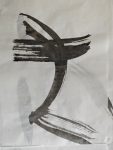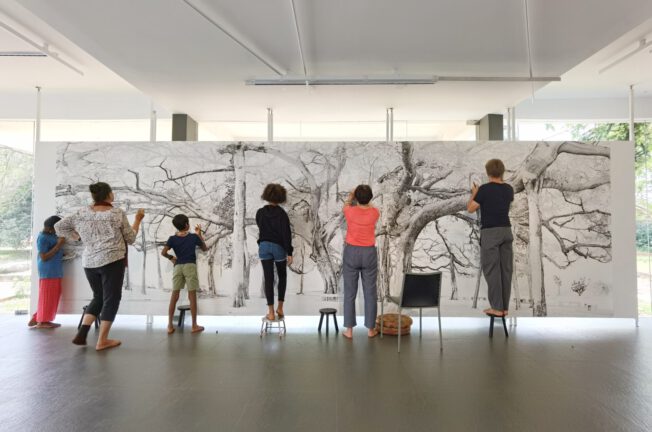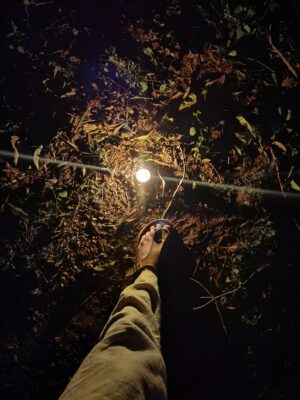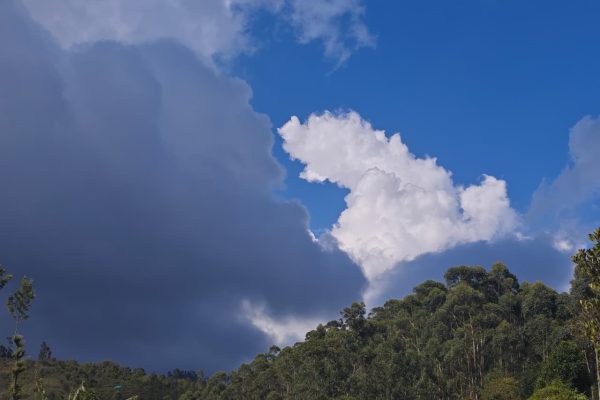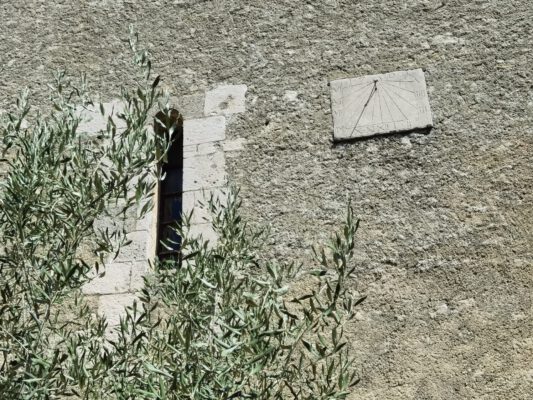Exhibition "Roots From the Sky" by Cedric Bregnard at Centre d'Art, Auroville March 2023
Cedric Bregnard is Artist in Residence at the Centre d'Art in Auroville. He will be taking a photo of the Banyan tree in the Matrimandir garden over the next 2 months. This photo will then be scaled to the size of a wall (approx. 3x7m) in the gallery. Residents of Auroville are invited to trace light and shadow on the bark, leaves, roots, with ink on the wall. What lies behind this process is complex and touches on the essence of photography, the materiality of trees and the power of life. The tree itself is the geographical center of Auroville and represents a very special place for many people, a place of contemplation, concentration and meditation. For many, this tree is more than just a symbol of nature, man and the cosmos. It manifests something.
So what is it all about? Let's start with photography, because Cedric Bregnard is a photographer. In 1998, as the final project of his studies at the Ecole de Photographie de Vevey, Bregnard photographed the deceased. He took several months to accompany four people in a palliative clinic in Switzerland on their final journey. They consented to Cedric Bregnard taking a photo of them. After life had left the body, he took three hours alone with the deceased, a kind of wake, to then take exactly one photo, the only photo, of the body - a portrait. The arc that is drawn here is existential: What is the transition from life to death? What is a portrait? What can photography represent? What exactly happens when a photograph captures a moment - technically, temporally, metaphysically?
Photographs are technical images. Joseph Nicéphore Niépce took the first photograph in 1826. Louis Daguerre further developed the photochemical process to patent maturity in 1839, and it was the brothers Louis and Auguste Lumière who invented the cinematograph in 1895. This device made it possible to both shoot and project films. The life-size moving image projections replaced the magic lantern and phantasmagoria.
In 1907, Henri Bergson criticized the cinematograph in his book Creative Evolution as an apparatus that produces illusory images. The sequence of individual images that create the illusion of movement is ultimately a lie. Plato argued similarly: painting is a lie, because you can't eat a painted apple. In 1985, Deleuze 'rescued' cinema from the accusation of lying by arguing that although the criticism was correct, it was short-sighted. The film strip contained more than just individual images, it was not the illusion of movement, but pure thought, was material philosophy. The cuts and collages allow for streams of thought that only film is capable of. Film is not 'truth 24 times a second' (Godard), but pure philosophy. The Elan Vital (Bergson), i.e. the life force that the cinematographer lacks, is expanded by the power of thought.
Latent images
Cedric Bregnard's performances implicitly relate to this discussion, albeit with a markedly different tone. After all, it is about how photography can transcend the technical image.
So let's go back to the beginning of photographic images. Light rays are captured using photochemical processes. A latent image is created, i.e. there is a light imprint in a chemical film on a carrier material. The latent image becomes visible when the transparent chemical compounds altered by the light are replaced by colored chemical compounds. With Daguerre, this was still silver on a glass plate. Kodak film, however, made working with negatives popular and inexpensive. The negatives could be enlarged efficiently in a large laboratory. We generally refer to these prints as photographs. So it is nature that 'paints' here, the light is captured with the help of an apparatus and made visible through chemistry. The photographer merely chooses the place, the time and the detail.
In Bregnard's process and his achievements, there is a very significant shift within this 'painting of nature'. He too chooses a place, the time and the detail - i.e. an object - specifically a tree - which he photographs with a camera. Instead of using a photochemical process, however, he uses a very high-resolution digital process. The pixels, which function somewhat like a latent image, are made visible by printing them on paper. The mathematical description of each pixel is transformed into a graphical representation using an algorithm and a printer. Most photographers who work digitally take these printouts as their final results. They are the equivalent of analog prints, i.e. photographs.
Making visible together
Bregnard works somewhat more finely. For him, the expressions are quasi negatives. An intermediate stage to the final image. The deduction of this negative is created in the performance. And this is where it gets a little magical.
The 'negative' that Bregnard prints is black and white without gray values. This means that every light reflex captured by the camera is set to either black or white, 'light or shadow'. This negative serves as the basis for the performance. Anyone can now take part and trace the traces of light and shadow. The image of the tree is collectively traced with ink. A nice detail here is that the ink is made from charcoal, which in turn is charred wood - a dead tree.
The collective tracing with ink itself is a process that Bregnard 'lets run'. He takes himself out of it. Again, it is nature that draws here. Nature in the sense of contrast to technology. But it is a higher form of nature, it is consciousness in the collective. The fact that this process is now taking place here in Auroville in relation to the Banyon tree is wonderful. That this is happening at a time when Auroville's driving force 'Diversity in Unity' is undergoing a test of strength may not be merely symbolic for some.
—
Bergson, Henri. Creative Evolution. New York: Henry Holt & Company, 1911.
Deleuze, Gilles. Cinema 1: The Movement-Image. 9th print. Minneapolis: University of Minnesota Press, 1986.
---. Cinema 2: The Time-Image. Minneapolis: University of Minnesota Press, 1989.
"Cedric Bregnard | Cedric Bregnard". Accessed February 10, 2023. https://www.cedricbregnard.ch/.

